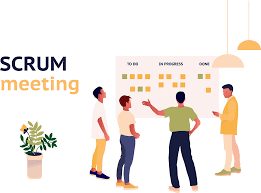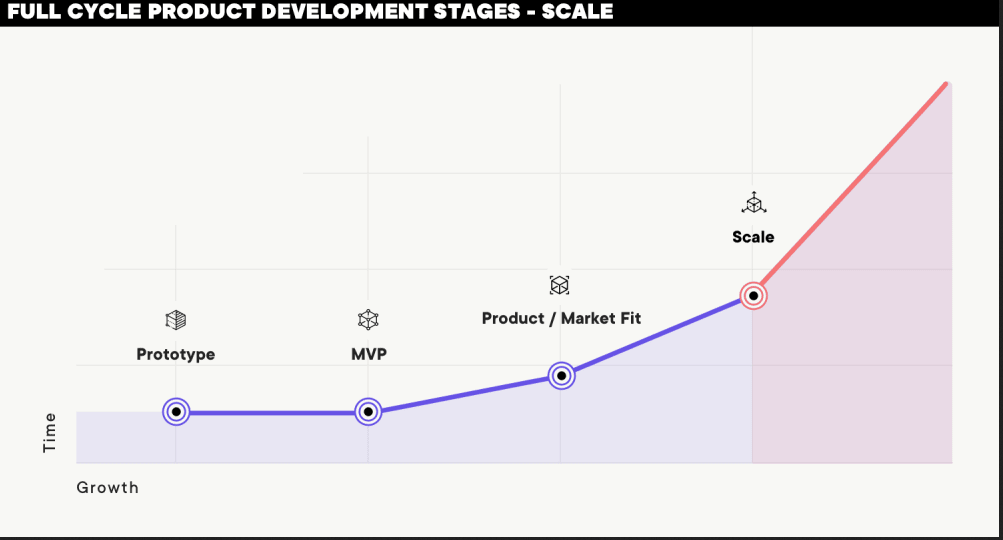SCRUM Lab#SC04: Final Project
Lab
📘 SCRUM Lab#SC04: Final Project
Welcome to the Agile Product Development Lab, where students embark on a hands-on month to create, market, and manage a product using Agile methodologies.
In groups of 4-5, each student assumes a crucial role for a holistic project experience.
- Project Overview: Students collaboratively select and define a product—digital or physical, such as a web app or tangible item. The challenge encompasses planning, execution, and optimization of the entire product lifecycle.
- Agile Framework: Teams apply Agile principles to manage the project effectively. Five sprints, each spanning a designated time, allow iterative development, fostering adaptability to evolving requirements.
1 Goal
This lab provides students with a practical understanding of Agile principles within the context of a product development project. By integrating roles, planning sprints, and emphasizing adaptability, students gain valuable insights into collaborative project management.
The experience extends beyond technical implementation, incorporating marketing, documentation, sales, and financial considerations, reflecting the multidimensional nature of real-world product development.
Through this comprehensive approach, students are well-equipped to navigate the complexities of Agile project management in diverse professional settings.
2 Roles and Responsibilities
- Programmer: Responsible for the technical implementation of the product. This includes both back-end and front-end development, ensuring the product meets functionality and design criteria.
- Marketing: Develops a comprehensive marketing strategy. Identifies target audiences, creates promotional materials, and plans campaigns to generate awareness and interest in the product.
- Documentation: Focuses on creating user manuals, documentation, and support materials. Ensures clear and concise information for end-users and stakeholders.
- Sales: Develops a sales strategy, identifying channels, pricing strategies, and customer engagement approaches. Works closely with the marketing team to align sales efforts with promotional activities.
- Scrum Master: Facilitates communication, removes impediments, and ensures the team adheres to Agile practices. Acts as a bridge between the team and external stakeholders.
- Product Owner: A designated Product Owner role is introduced to oversee the project’s vision and prioritize features.
3 Sprint Planning
Teams design five sprints, with each focusing on specific aspects of the product development lifecycle.
This includes feature implementation, marketing campaigns, documentation refinement, sales outreach, and retrospectives for continuous improvement.
4 Sprinting: product, sell, scale
During each sprint, teams work collaboratively within their roles, with daily stand-ups for progress updates. The Agile framework ensures adaptability to changing priorities and allows for continuous refinement based on feedback.
4.1 Product Creation
Teams initiate the product creation process by conducting thorough market research and identifying customer needs. The programmer and design roles collaborate on prototyping and development, ensuring alignment with user requirements. Agile principles, such as user feedback loops, guide iterative improvements.
The documentation team creates user-friendly guides, contributing to a positive user experience. Continuous integration and testing are prioritized, ensuring a high-quality product. Regular demonstrations during sprints facilitate feedback, enabling quick adjustments.
This emphasis on the iterative development cycle ensures that the final product not only meets technical specifications but is also well-aligned with customer expectations and market demands.
4.2 Marketing and Sales
The marketing and sales teams synchronize efforts to align promotional activities with product releases. Feedback from sales efforts informs marketing strategies, creating a feedback loop for continuous improvement.
4.3 Financials and scalling
Teams are responsible for financial aspects, including budgeting, cost estimation, and revenue projections. Financial discussions occur regularly to ensure alignment with project goals and realistic expectations.
5 Tools
We propose a versatile toolkit comprising Figma, Canva, Airtable, AppSheet, GitHub Wiki, HRef, and Buffer.
However, it’s crucial to emphasize that these tools serve as a proposal, not a prescription.
Each group has the autonomy to thoughtfully select the tools that best align with their project’s unique characteristics, goals, and team dynamics.
This flexibility ensures that teams can tailor their toolset to enhance collaboration, streamline development, and optimize project management in a way that suits their specific needs and preferences.
5.1 Tool Integration for Seamless Collaboration
Figma for Design Collaboration: Figma facilitates collaborative design, allowing the design team to create interactive prototypes and share them in real-time. Design iterations are streamlined, promoting efficient communication and alignment with user expectations. Learn more about Figma
Canva a versatile graphic design platform, extends its utility to web design within our proposed toolkit. Teams can leverage Canva’s intuitive interface and pre-designed templates to craft visually appealing web elements, such as banners, logos, and social media graphics. This tool simplifies the design process, enabling even those without extensive graphic design skills to create professional-looking web assets. Explore Canva
Airtable for Project Management: Airtable serves as a centralized project management tool. Teams can create custom workflows, track tasks, and manage sprints collaboratively. Its flexibility accommodates the diverse needs of each role, providing a dynamic platform for project organization. Discover Airtable
AppSheet for Rapid App Prototyping: AppSheet integrates seamlessly with Google Sheets, enabling rapid app prototyping. The programming team can quickly iterate on app functionalities, and the entire team can provide feedback through the intuitive interface, fostering collaboration and swift adjustments. Explore AppSheet
HRef for Marketing Campaigns: HRef is utilized for creating engaging marketing campaigns. The marketing team designs landing pages, tracks user interactions, and adjusts campaigns based on real-time analytics. This tool streamlines the marketing process and enhances the team’s ability to adapt to changing market dynamics. Learn more about HRef
Buffer for Adaptive Planning: Buffer is introduced to the project management toolkit, providing a dedicated space for teams to incorporate time buffers. This ensures flexibility in the project timeline, allowing for unforeseen challenges or additional iterations. Teams can allocate buffer time strategically within sprints, enhancing adaptability without compromising project timelines. Discover Buffer
5.2 Documentation
GitHub Wiki for Documentation: GitHub Wiki serves as a centralized repository for project documentation.
The documentation team can create and edit pages collaboratively, ensuring that user manuals, guides, and technical documentation are easily accessible and consistently updated.
With Markdown, teams easily create and edit pages, capturing project insights and guidelines. This linkable knowledge hub enhances transparency and fosters effective communication, providing a centralized resource accessible to all stakeholders. Discover the power of GitHub Wiki.
5.3 Integration Strategy
Teams utilize these tools within an integrated workflow. Figma prototypes inform AppSheet development tasks in Airtable. GitHub Wiki links serve as a reference hub for all teams, fostering cross-functional awareness.
HRef data is incorporated into Airtable for comprehensive analytics. This interconnected toolset ensures seamless collaboration, allowing teams to focus on their specific responsibilities while maintaining visibility into the broader project landscape.
6 Flexibility in Project Depth
Students have the flexibility to choose the project depth, whether delivering a comprehensive product or focusing on a mockup.
This approach allows teams to adapt based on their skill sets, time constraints, and project goals. The emphasis remains on collaborative learning, iterative development, and effective use of tools to simulate real-world scenarios in Agile product development.

